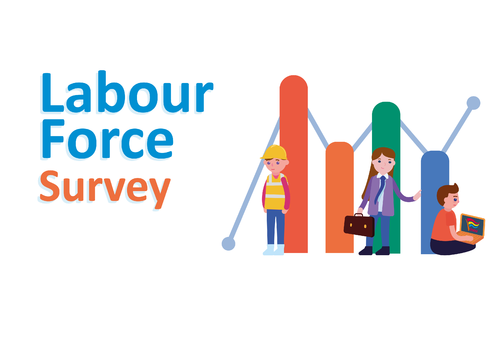Labour Force Survey Quarter 4 2023
On February 22nd, 2024 the Central Statistics Office (CSO) published the Labour Force Survey (LFS) for the fourth quarter of 2023, which covers the months October to December. In this release the CSO noted that the “results incorporate updated population estimates for the period 2016 Q3 to 2023 Q3, based on the results of Census 2022. LFS results are updated in this way following each Census of Population.”
In Q4 2023, 117,700 people were unemployed, an increase of 5,100 people over the year, and 6,100 higher than in Quarter 4 2019, the last quarter before the Covid-19 pandemic hit Ireland. Looking at these two years from a duration and gender perspective: there were 12,500 more women unemployed at the end of 2023 than at the end of 2019, and a smaller increase in the number of men unemployed for less than a year. While the number of men and women unemployed for more than a year fell by 5,300 and 4,000 respectively.
The unemployment rate in Q4 2023 was 4.2%, an increase of 0.1 ppt over the year. The unemployment rate for women was 4.3%, the same as Q4 2022; while the unemployment rate for men was 4.1%, an annual increase of 0.1 ppt. Women accounted for 49% of the unemployed in Q4 2023, slightly higher than in Quarter 4 2022.
The unemployment rate for young people aged 15-24 years was 9.4%, an increase of 0.3 percentage points over the year. While the unemployment rate for people aged 25-74 years olds was 3.4%, a decrease of 0.1 percentage point. Young people accounted for 29% of the unemployed in Quarter 4 2023, in comparison to 27% at the end of 2022.
The number of people deemed long-term unemployed decreased by 14.2% over the year to 29,500 people, while the long-term unemployment rate fell by 0.2 percentage points to 1.1%. The CSO notes, excluding people whose duration was not stated, that “Over a quarter (26.6%) of unemployed persons were in long-term unemployment in Q4 2023 which is down from 32.8% a year earlier”. Women accounted for 40% of the long-term unemployed in Q4 2023, slightly lower than in Quarter 4 2022.
The Potential Additional Labour Force (PALF) captures people who may not fit into the official definition of unemployment, whereby people have to be actively seeking work for the previous four weeks and available to take up work in the coming two weeks of the survey. In Q4 2023, PALF stood at 105,700, an increase of 73.4% or 44,700 people on the same quarter in 2022. When the INOU enquired why this figure increased so much, the CSO noted that the increase is amongst young people and is primarily a demographic effect i.e. changes in the size of the working age population.
The increase in the number of people employed in Ireland continues to grow, with 2,706,400 people were employed in this quarter, an increase of 89,700 on Q4 2022. A 2.6% increase in full-time employment accounted for 65% of the increase in employment overall. The employment rate was 74%, an increase of 0.7 percentage point over the year. Women accounted for 41.5% of people in full-time employment in Quarter 4 2023, 0.7 percentage points higher than Q4 in 2022.
Part-time employment increased by 5.5% to 592,400. Women accounted for 67% of people in part-time employment. Part-time underemployment increased by 36% to 139,800 people. In Q4 2023 women accounted for 60% of people who described themselves as underemployed, a decrease of 2.5 percentage points over the year.
Over the year the Labour Force rose by 3.5% to 2,824,100. The labour force consists of people who are in employment plus people who are unemployed. Two factors influence changes in the Labour Force: the demographic effect (+52,200) and the participatory effect (+42,500).
The participation rate in Q4 2023 was 65.4%, an increase of 0.8 percentage points on the Q4 2022. The participation rate measures the share of the total population aged 15 years and over who are in the labour force. Over the year the participation rate increased for men from 70.1% to 70.6%, and for women from 59.4% to 60.4%. The participation rate for people aged 15-24 years was 53.5%, an increase of 2.5 percentage points.
